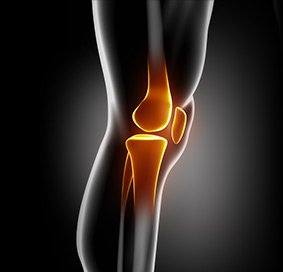Lower Limb Reconstructive Surgery

Reconstructive surgery is a procedure wherein injured areas or defects are corrected by using flaps of tissue, skin, bone or metalwork, along with underlying blood vessels or muscle to rebuild the damaged tissues. On the upper limb, reconstructive surgery is performed to improve the structure, function, and cosmetic appearance. The lower limb includes the hip, thigh, leg and foot. Reconstruction of these structures can avoid amputation or shortening of limbs and prevents many complex defects that result from injuries.
Indications
Indications for the lower limb reconstruction include:
- Accidents or trauma
- Pre-tibial lacerations (cuts on the front of the lower leg)
- Open fractures such as bone-break below the knee that injure the surrounding soft tissue
Surgical Reconstruction Techniques
Surgical reconstructive techniques for lower limbs include:
Skin grafts:
A skin graft is a healthy patch of skin taken from another part of your body (donor site) to cover the damaged or missing area. Your doctor will choose a skin graft depending on the damaged area.
- Split-thickness skin graft: Your surgeon will use skin layers that are close to its surface for treating burns or other injuries.
- Full-thickness skin graft: Your surgeon will use all skin layers from the donor site for treating small defects on the limbs.
- Composite graft: Your surgeon will use all layers of the skin, fat and also the underlying cartilage to treat wounds that have a complex shape.
Flap surgery:
Flap surgery is the transfer of a piece of tissue from one part to another part of your body, along with the blood vessels. Flaps can repair more complex defects due to the presence of their own blood vessels. The types of flaps used for reconstruction include:
Local flap: Your surgeon will create a flap from the skin lying close to the wound, along with its underlying tissue and blood supply, and will pull it over the wound.
Regional flap: Your surgeon will use a tissue flap by keeping a specific blood vessel attached to it. In case of an open fracture, your surgeon will move a muscle flap over the open fractured site while keeping a narrow attachment common with the original site.
Free flap or microsurgery: Your surgeon will transfer a section of tissue from one part of your body to another along with its blood vessels. This modified procedure may take the free flap from your inner thigh and reconnect the blood vessels through microsurgery (using a microscope).
Bone graft: Your surgeon will transfer bone tissue along with blood supply.
Post-operative care
After the reconstructive surgery, you are advised bed rest until the swelling at the site of reconstruction has reduced and the flap has adhered to the damaged site. You will be advised to dangle the tips of your operated leg for short periods to ensure that your mobility does not modify the blood supply. Your therapist will assist you with a wheelchair or crutches. Your doctor will prescribe blood thinners to prevent the risk of deep vein thrombosis (clot formation) and pulmonary embolism (blockage of artery in the lungs).
Risks and complications
As with any surgical procedure, limb reconstruction involves potential risks and complications. These include flap failure due to inadequate blood flow, twisting of the narrow attachment and blood vessels that are common to the donor site, or tension during setting the flap, hematoma (pooling of blood outside a blood vessel) causing flap tissue death as well as infection at the wounded site.










